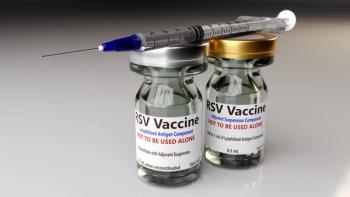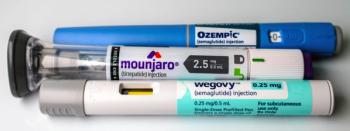
Breast Cancer Dominating Oncology Research, Access Disparities: Gen Li, PhD
Breast cancer is the most researched disease globally, yet there are still significant gaps in equity and access to care and treatments.
Breast cancer is the most researched disease in the world for the fourth year in a row, according to
Yet despite its dominance in the clinical research field, there are still significant inequities in access to care and treatments. Whereas the majority of
Furthermore, Phesi’s report also indicated that more than 1 in every 3 trials (31%) were terminated in phase 2 in 2024, rising from 29% in 2023. Although researchers expected trial attrition rates to return to normal after the pandemic, that was not the case.
Li also emphasized the ethical considerations regarding trials in which not every patient is guaranteed the newer treatment and participants can be randomized to a placebo or inferior comparators.
“If we are able to mimic how those placebo patients would behave using the digital patient profile, then we will be able to reduce the exposure of those patients to the placebo and/or the comparators,” Li said.
In this Q&A, Li discusses the current state of breast cancer research and the global potential of key innovations like AI being implemented and applied in a clinical setting.
AJMC: Your new analysis found that breast cancer remains the most studied disease globally for the fourth consecutive year. What does this continued dominance tell us about the state of oncology R&D—and are we seeing meaningful translation of this research into patient outcomes worldwide?
Li: It's not surprising that breast cancer continues to be a focal point from the clinical development point of view. One [reason] is [because of] the devastation of the disease. Another one is the large population of patients it’s impacting all around the world.
Generally speaking, there are 2 factors driving clinical innovations and treatment innovations. One is the disease in itself: how serious it is and how many people it impacts. Another one is how much we understand this disease. Breast cancer, of course, meets both the criteria, as we are also deepening our understanding of this disease with different biomarkers and with different specificities.
Therefore, I would predict, not only is it [the most] extensively studied disease, but it will also continue to be at the top of the list in the foreseeable future for various clinical development activities.
AJMC: Your team’s prior analyses have highlighted global disparities in clinical development, with activity and key opinion leaders concentrated in the US and China. Given that breast cancer again tops the list, how do you interpret these inequities in trial distribution and patient access?
Li: That's a painful aspect of reality. It's the inequality from the clinical development and related to the clinical development of our outreach to different geographies and different ethnic and racial groups. Just using China and the US as 2 examples, despite the intensified activities in both of those countries, both in China and the US, we still have very vast populations that we're not able to reach. If you're looking at China, in the areas outside some of the major metropolitan areas, the standard of care is still fairly poor. In the US, as we all know, we have this existing and ongoing racial and ethnic inequality still going on.
All of those things are demanding we work harder and find ways, particularly in data science and AI, to help us to be more focused on those demographics. We have to take care of those factors to be able to reach the maximum benefit for the enormous investment that we're putting into clinical development. To benefit not just some people, but all people and the whole population, we are actually gladly doing precisely just that.
AJMC: We’re reporting on how many women with metastatic breast cancer worldwide still miss out on innovative therapies emerging from these studies. Another Phesi press release from 2022 reported that only 14% of breast cancer trials reached optimal enrollment targets. What steps—data-driven or structural—could help make trial development and participation more inclusive globally?
Li: What we are able to do using data science and powered by AI is understand where the inequities exist, where the opportunities are, and how we can precisely take action cost-effectively to spread the riches to all different groups as they are entailed by themselves, with the disease in that kind of specificity.
Those are the types of things we are able to do. We are doing that by working with our clients. But to change that equation, it requires the whole society and the government and governments around the world, actually, and many of the resources from global pharmaceutical companies working together towards those goals.
To my understanding, there are industry alliances that are focused on dealing with the issues and how we can better reach out to the African countries, and there are many similar activities going on in different charities. But that's not enough. We need to have much stronger interference from the governments around the world, working together, and other different sources to work together to deal with those issues and solve those problems.
References
1. Breast cancer tops the most-studied diseases list for fourth year, but trial attrition rate rises. Phesi. January 21, 2025. Accessed October 17, 2025.
2. Only 14% of breast cancer trials reached optimal enrollment targets in 2021, despite being the most studied indication globally. Phesi. February 3, 2022. Accessed October 17, 2025.
3. McCrear S. Low trial enrollment, racial disparities limit breast cancer treatment innovation. AJMC®. October 24, 2025. Accessed October 31, 2025.
Newsletter
Stay ahead of policy, cost, and value—subscribe to AJMC for expert insights at the intersection of clinical care and health economics.














































